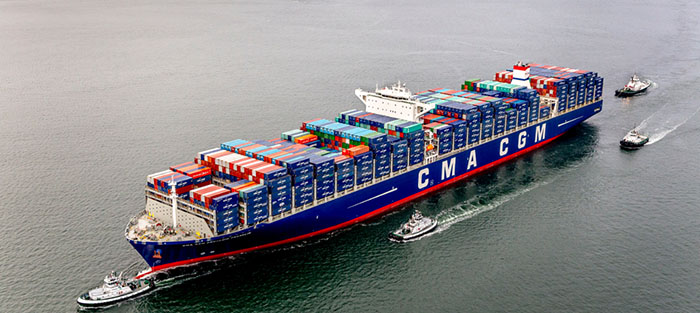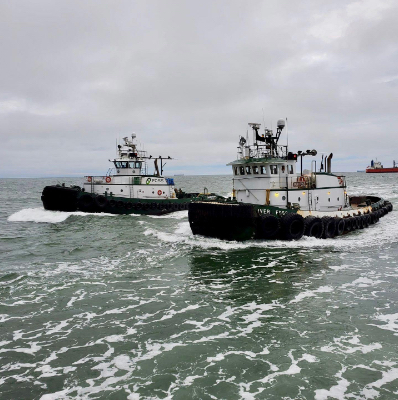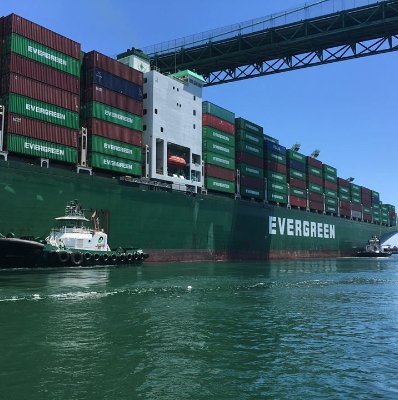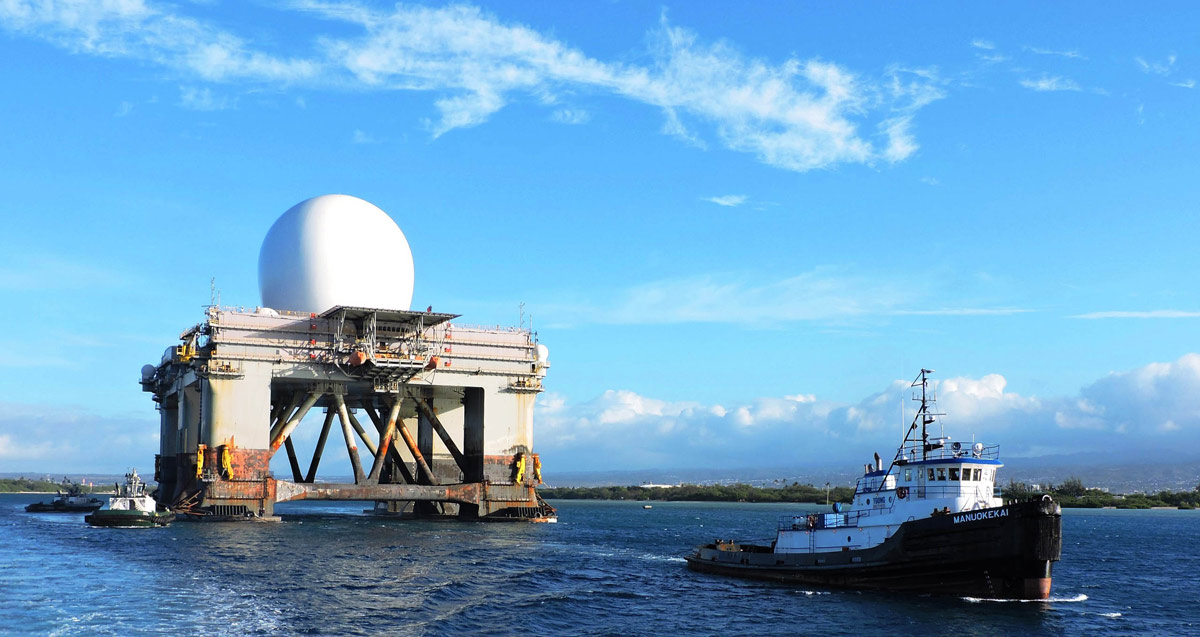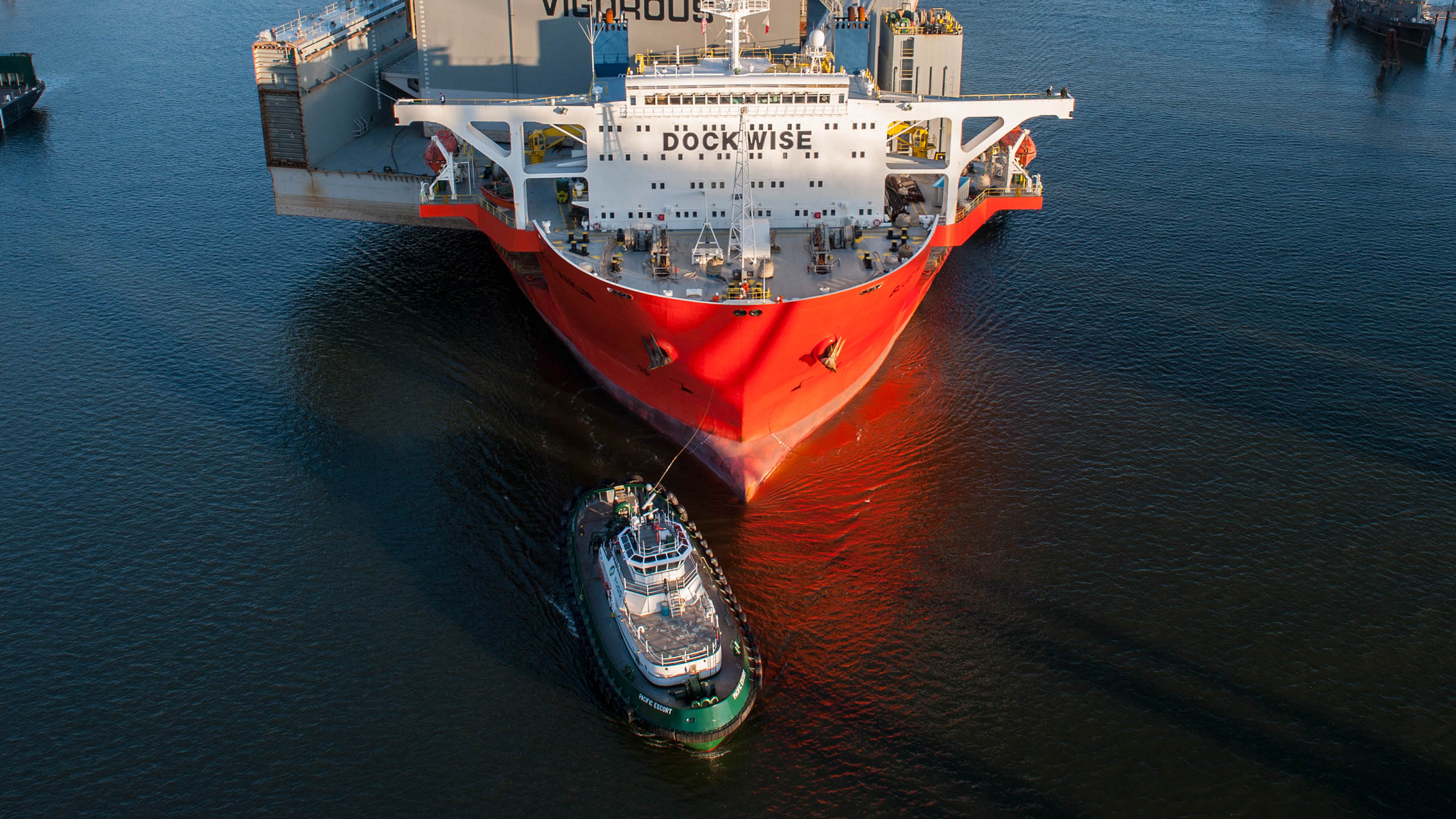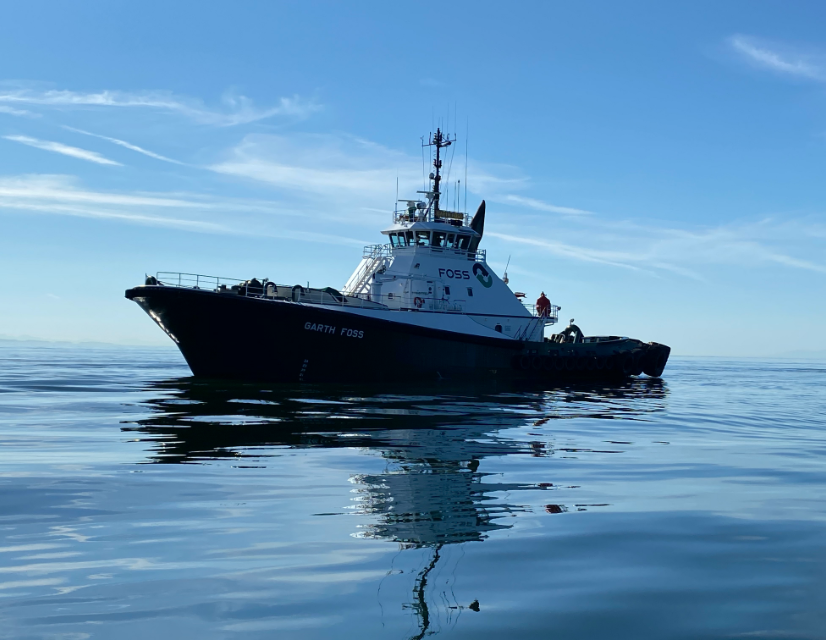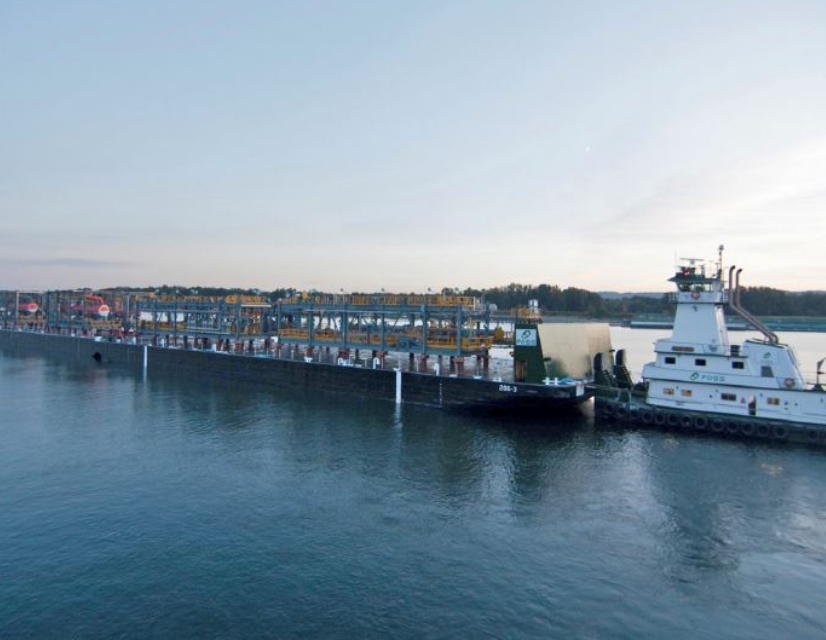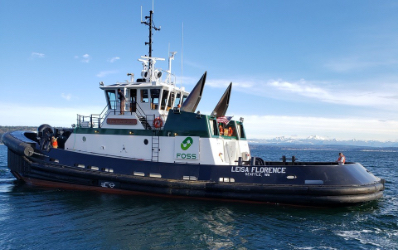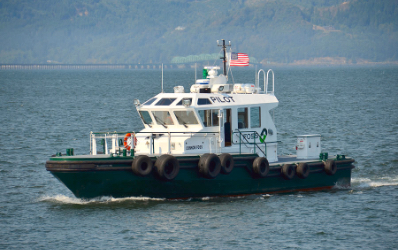Power and Reliability in a Green Package
The Foss Rainier Shipyard built the world’s first hybrid tug, the Carolyn Dorothy, operating today in the San Pedro Bay. The 23.8 m (78 ft) Dolphin-class hybrid tug was designed to retain the power and maneuverability of her sister tugs, while dramatically reducing emissions, noise, fuel consumption, and machinery maintenance costs.
The same hybrid technology used to develop the Carolyn Dorothy can be used to convert existing harbor tugs – and other types of workboats – to hybrid vessels with lower emissions, improved fuel economy and lower maintenance costs. The Foss Engineering team can convert your standard tug to a hybrid tug, accommodating many tug designs and propulsion systems.
Foss completed the conversion of the Campbell Foss tug in January 2012 at the Foss shipyard in Rainier. Later that month the Campbell Foss entered service along side its sister hybrid tug. The Alta June, a conventional Dolphin class tug in service with the hybrids in southern California, is scheduled to be converted in the next few years.
Why Go Hybrid?
The hybrid technology is environmentally responsible—without sacrificing horsepower or maneuverability. The technology can be used to convert existing tugs of all types to hybrid vessels with lower emissions, improved fuel economy and lower maintenance costs.
Click to read about:
- Reducing Emissions
- Without sacrificing power or maneuverability hybrid technology shows a significant reduction* for pollutants related to combustion efficiency – 73% for particulate matter and 51% for nitrogen oxides. With reductions of 27% for fuel related pollutants (sulfur dioxide and carbon emissions).
* From a study completed by the Center for Environmental Research and Technology (CERT) at the University of California, Riverside (UCR) in the Ports of Los Angeles and Long Beach, over a seven-month period from January to July, 2010.
- Flexible Technology
- The hybrid technology is extremely flexible, and can be used to retrofit existing tugboats, build new tugboats, and can be applied to other marine vessels, including ferries and supply boats.
- Power Where You Need It
- With dozens of possible equipment configurations, hybrid technology delivers only the power needed through the most efficient combination of power sources. Engines, batteries and generators are controlled by an engine management system—to optimize power sources to run only when needed for maximum efficiency.
- Improving Fuel Economy
- Hybrid technology realizes better fuel economy by sharing the propulsion load between the diesel and electrical sources to reduce unnecessary idling. Reducing fuel consumption by an estimated 20–30%.
- Noise Reduction
- The use of quieter batteries and generators instead of large diesel engines offers extreme noise reduction, which improves the quality of life on the vessel, on the shore, and under water.
- Lower Maintenance Costs
- Hybrid technology reduces the number of operating hours by approximately 50% on the main engines. Reducing unnecessary idling in turn results in less frequent engine overhauls.
- Improving Safety
- Effectively remove any chance of power loss with multiple system redundancies and configurations.
Read More About Foss’ Environmental Commitment
Regions We Serve
Featured Projects
Our Fleet
